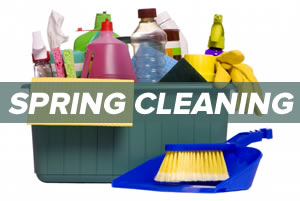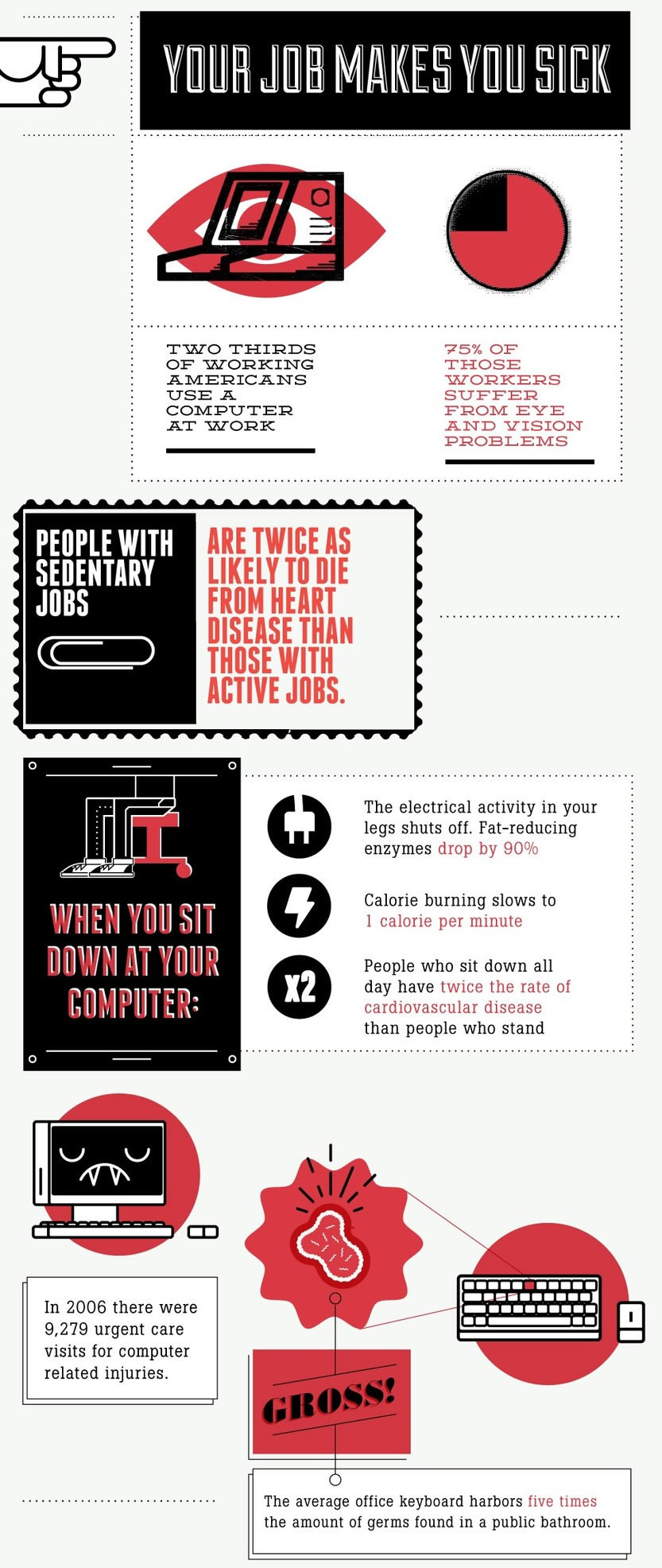
 Here’s another post for my Spring Cleaning series, the set of articles that I’m taking out of my Drafts folder, finishing, and posting at long last. In case you missed the earlier ones, here they are:
Here’s another post for my Spring Cleaning series, the set of articles that I’m taking out of my Drafts folder, finishing, and posting at long last. In case you missed the earlier ones, here they are:
- Burgers. Burgers everywhere.
- Which beer is most likely to land you in the emergency room?
- Weber Cooks, the saddest cooking show
- Get on your bicycle!
- Fireworks and sensitive body parts
This post is filled with stuff I’d been meaning to point to on a topic that takes up anywhere from one to two thirds of our weekdays (one tenth if you’re from Portland): work!
This is just part of the infographic. Click it to read the full infographic and matching article.
This one’s from two years ago, but it still holds true: an infographic featured on Mashable saying that work is killing you slowly. It’s not that you should quit working, but that you need to work around today’s most common work style (especially for readers of this blog): sedentary, desk-bound, and often in front of a computer for hours. If you can find a way to work some kind of activity into your workday — think of it as interval training — you’re likely to see some benefits.
Time. Sink. Get it? Click it to read the matching article.
Jason Friedman, on his blog HumbledMBA, talks about things that take up precious work time at startups and do nothing to delight customers: launch parties, office food, team-building activities, meetings, meetups, agile processes, business cards, PowerPoint, and many more. “Of course, much of this stuff still needs to get done,” he writes, “At some point. And some of it really is important to the process that eventually creates delight for users. But none of it directly delights users. They’re all inputs. None of it is product.” He’s writing for people in startups, but it could just as easily apply to people in the non-startup world.
Running a current through your brain can help generate ideas. Click it to read the matching article.
Want to get ahead in your workplace? This Harvard Business Review article points to some research with disturbing findings: be disagreeable, get someone to wish you luck, look at a dead cat, “live in sin” before getting married, jokingly ask for a ridiculously high salary, and run an electric current through your brain.
The “Always Be Closing” scene from Glengarry Glen Ross. Be advised: there’s swearing aplenty.
Here’s another HBR article: How to Close a Sales Call. Here’s how the article itself closes:
If you are a senior salesperson, you’ve already closed your share of business and know many different closing techniques. You also understand that your closing strategy must vary depending upon the customer’s background, your competitive position, and the circumstances that are unique to the sales cycle. Sometimes, you need a commanding hard close for your meeting. For example, if the sales cycle for the products you sell involves only one or two customer interactions. With experienced buyers, consider a softer close because how many times do you think they have heard “this is our best and final offer” and every other type of hard close before?

Be sure to check out more of Drew’s comics on his site, Toothpaste for Dinner.
Blogging isn’t for everyone, but it’s been nothing but great for me and my career. You might want to check out Why Every Professional Should Consider Blogging and The Secret Formula To Never Being Unemployed for more details why.
The flight deck of an Airbus A380. Click the photo to see the source.
And finally, some advice from a Cessna pilot’s emergency checklist: FLY THE AIRPLANE.




One reply on ““Spring Cleaning” post #6: Work!”
[…] Work! […]